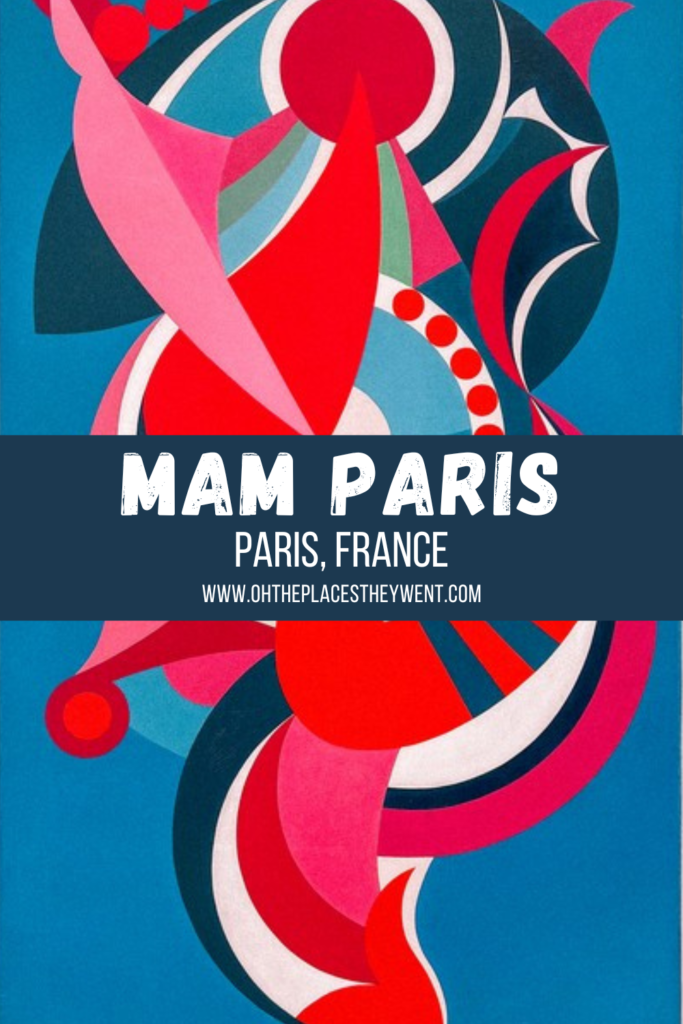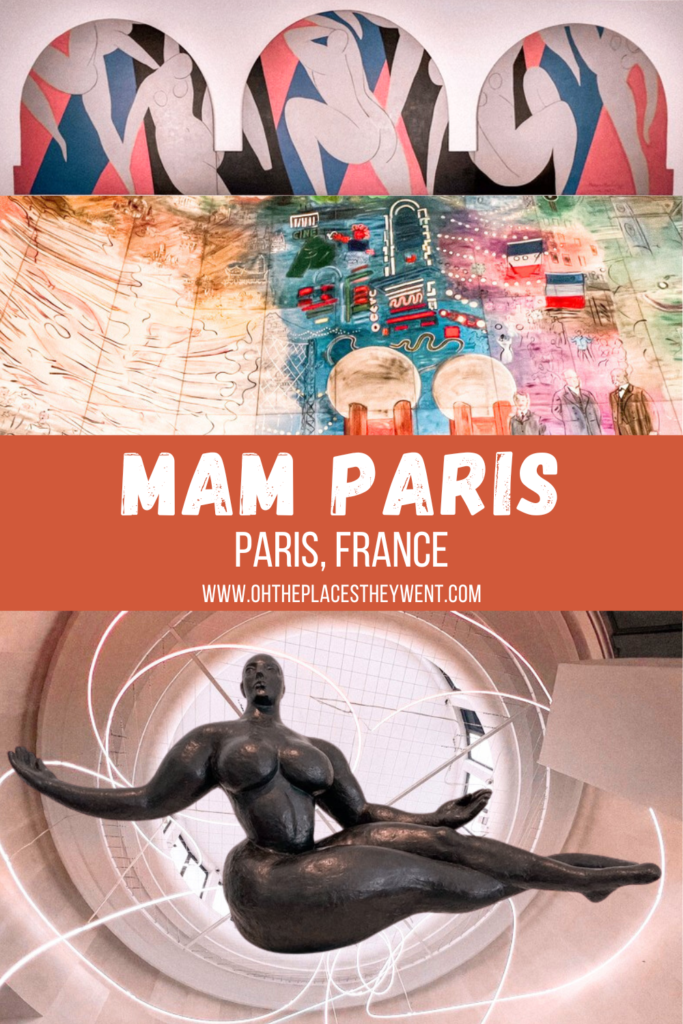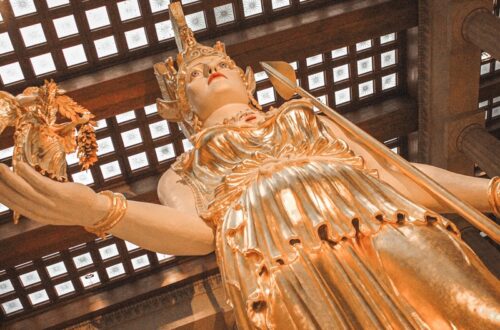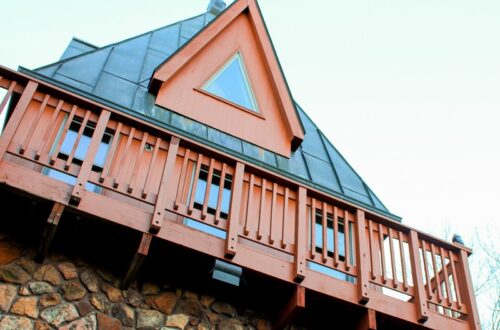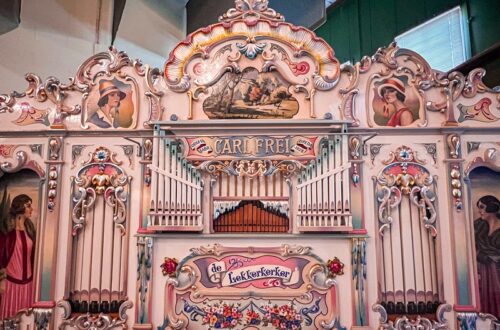Modern Art & Free Too: The Musee D’Art Moderne De Paris
We were taking in the Eiffel Tower from the banks of the Seine river and as we walked away, we came upon the striking Musée d’Art Moderne de Paris, or MAM Paris. Featuring free admission and more than 15,000 works of art, it is one of the biggest museums of modern and contemporary art in France.
If you’re like us, planning a weekend in Paris and looking for all of the free things to do in Paris, here’s a spot to add to your list. We had visited Petit Palais on our first day and this was a fun modern continuation of that artistic experience.
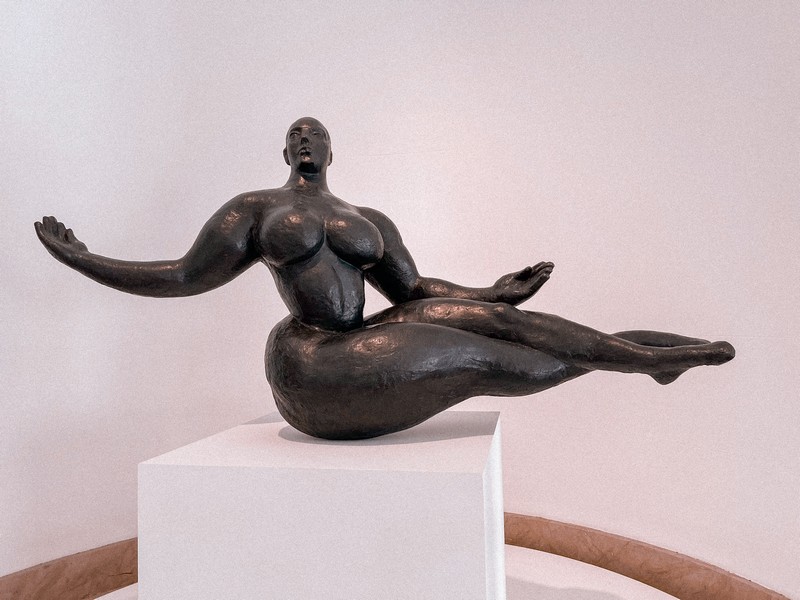
There are some fabulous free museums in Paris, France and MAM Paris is definitely one of them:
(This post contains affiliate links, which means I receive a certain percentage of a sale if you purchase after clicking at no cost to you. Thank you for your support.)
Basic Info
- Address: 11 Avenue du Président Wilson, 75116 Paris, France
- Hours: Tuesday – Sunday: 10:00am ~ 6:00pm
- Admission: Free
- Website: https://www.mam.paris.fr/

From History To Modern Times
The Musée d’Art Moderne de Paris is housed in a beautiful 1930s building that is hard to miss as you walk along the Seine River. Before you even enter, you’ll likely want to take a seat around the pool of water and just enjoy the exterior details and columns.

Inside, the halls and corridors are simple and modern, mostly undecorated which means your eyes are immediately drawn to the artistic sculptures and paintings that grace the spaces.

The Electrified Collection
The permanent collections present all the main artistic trends from the beginning of the 20th century up to the present day including Fauvism, Cubism, Art Deco, and Surrealism. There are major artists from those periods, such as Picasso, Dufy, Modigliani, Derain, Picabia, Chagall, as well as Boltanski, Parreno and Peter Doig.

When you first enter and go through security, you need to decide which direction to go, up or down. We went up a few steps to find the massive and bright installation called La fée électricité by Raoul Dufy.
His commission was for the slightly curved wall of the entrance to the Pavillon de la Lumière et de l’Électricité, built by Robert Mallet-Stevens on the Champ de Mars and now you can take a seat and be surrounded by this beautiful piece.

The composition unfolds across 600 m2, from right to left, on two principal themes: the history of electricity – from the first observations to the most modern technical applications of it. The upper part is a changing landscape in which the painter has placed some of his favorite subjects: sailing boats, flocks of birds, a threshing machine, and a Bastille-day ball.

Stretching the length of the lower half are portraits of one hundred and ten scientists and inventors who contributed to the development of electricity. You can take a tablet when you enter the room that goes into explaining each detail of the piece.

The museum also showcases the first two versions of La Danse by Henry Matisse. Between 1930 and 1933, Henri Matisse worked almost exclusively on this huge project, which was a creative milestone in his career.
Never having created a work in an architectural setting, the commission was a great challenge for Matisse. Three versions of La Danse exist; two of them are in the Musée d’Art Moderne de la Ville de Paris.

Not satisfied with the first version, La Danse inachevée (‘The Uncompleted Dance’), which he considered too decorative, Matisse embarked on a second version of La Danse, with a system of pieces of colored paper (grey, blue, pink and black), cut out and pinned to the canvas to facilitate changes to his composition. Matisse achieved the balance he was seeking; this version was called La Danse de Paris. But, unfortunately, the measurements were wrong for the architecture.
He decided to begin again with a third version, which was installed at the Barnes foundation in April 1933. In 1990, La Danse inachevée was discovered in Matisse’s studio in Nice. That version and La Danse are both on display at the museum in the room devoted to Matisse.


My daughter was really taken by the colorful pieces by Robert Delaunay. Inspired by color theoreticians, there are a number of huge works that showcase simultaneous and successive color contrast. This particular kind of Cubism, which Apollinaire dubbed Orphism, produced an illusion of movement.
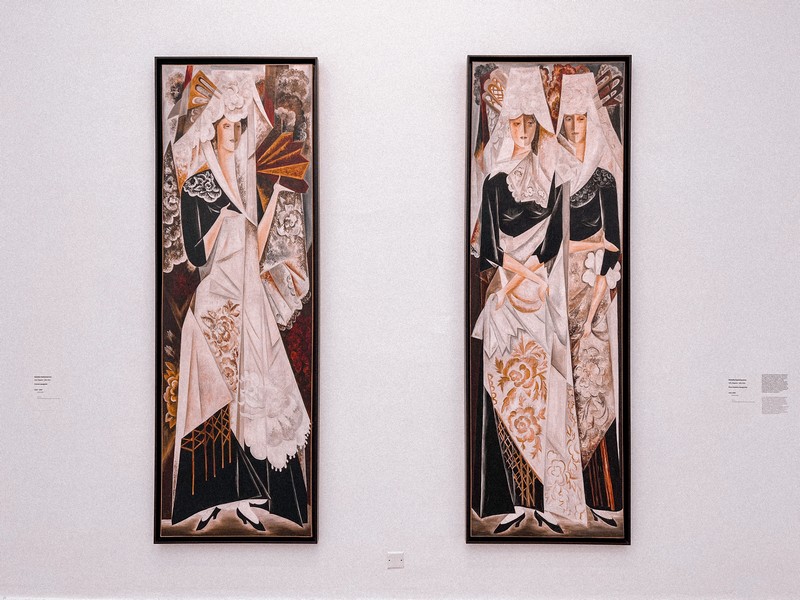



The museum is spacious and easy to walk through. Take your time and take everything in. There is enough to fill quite a bit of time.

Tear your eyes away from the beautiful paintings on the walls and you’ll find some very interesting sculpture works. Be sure to find Conglomeros by Victor Brauner. The smooth, white, multi-limbed creature is a combination of male and female with a bulbous head and too many limbs for comfort.




MAM Paris is a fantastic museum in Paris and on top of that, doesn’t have the crowds that a lot of the top museums in the city have. Budget-friendly, kid-friendly, mother-approved. This is one museum that would be a great addition to any Paris itinerary.
Did you like this post? Pin IT!
